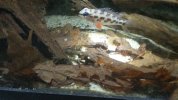-
Hello guest! Are you an Apistogramma enthusiast? If so we invite you to join our community and see what it has to offer. Our site is specifically designed for you and it's a great place for Apisto enthusiasts to meet online. Once you join you'll be able to post messages, upload pictures of your fish and tanks and have a great time with other Apisto enthusiasts. Sign up today!
You are using an out of date browser. It may not display this or other websites correctly.
You should upgrade or use an alternative browser.
You should upgrade or use an alternative browser.
dicrossus sp rio negro
- Thread starter bourdinite
- Start date
- Messages
- 99
- Location
- saint denis ; ile de la reunion
here is the summary of everything.
on Monday, July 26th at 22 h 20 the laying began to finish her at 23 h 00.
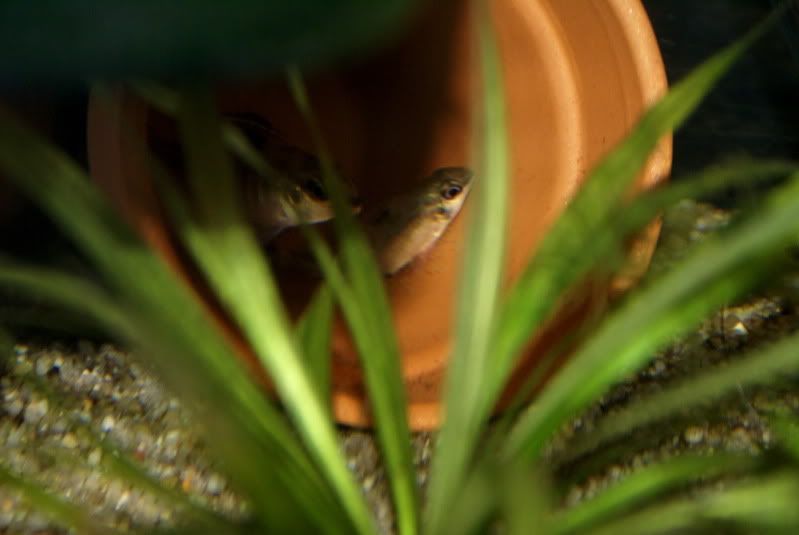
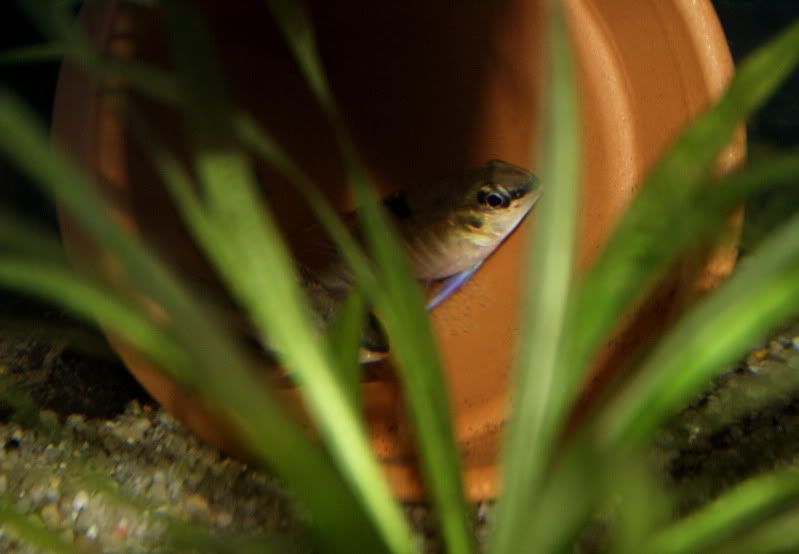
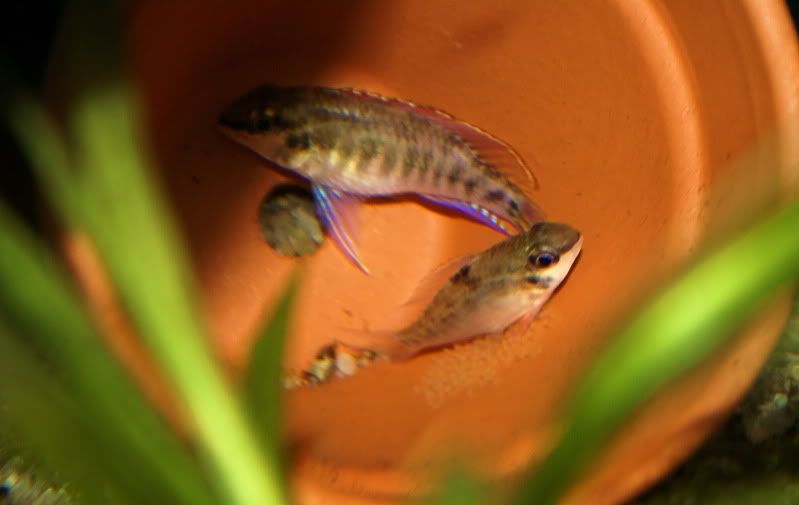
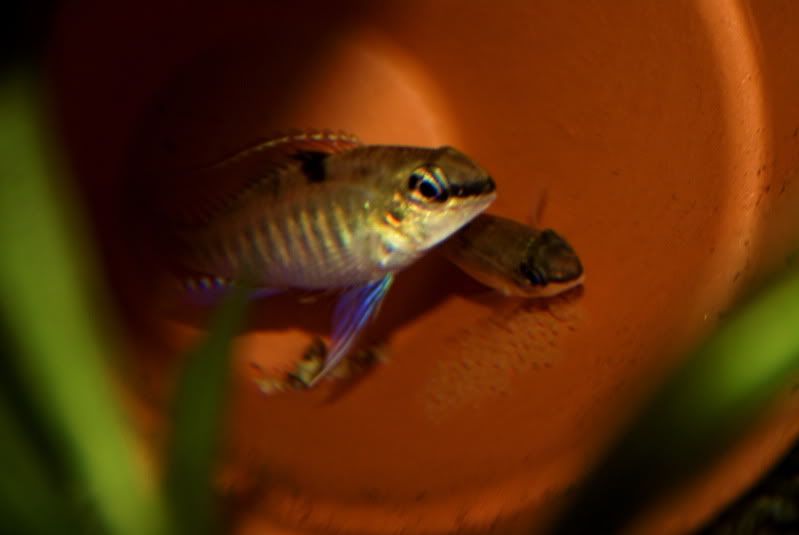
once this one barely finished the male was directly dispelled and will be never tolerated untill today. to see in future.
parametres during the laying are of pH 5.2 for 75µs of conductivity in a temperature of 26°c.
J+1 the laying goes very well and kept well by the female. very few eggs white which barely going mouldy are withdrawn by the mother.
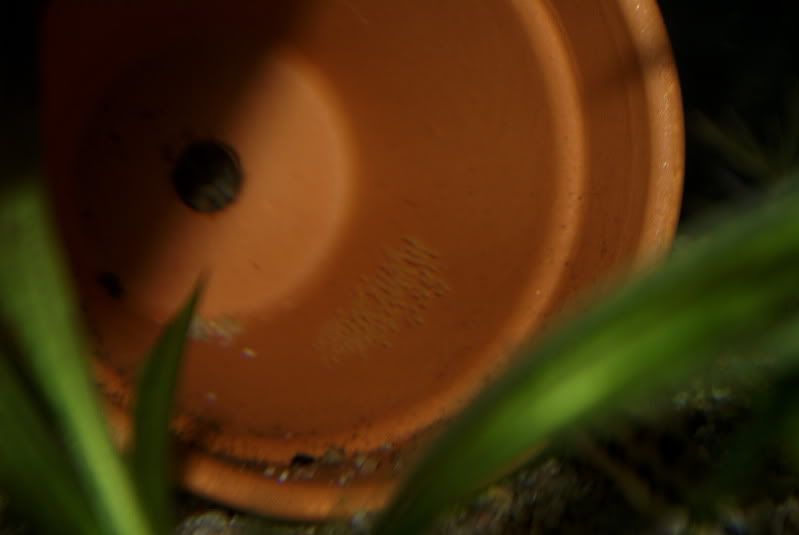
J+2 2 or 3 white eggs withdrawn still very fast and everything goes well.
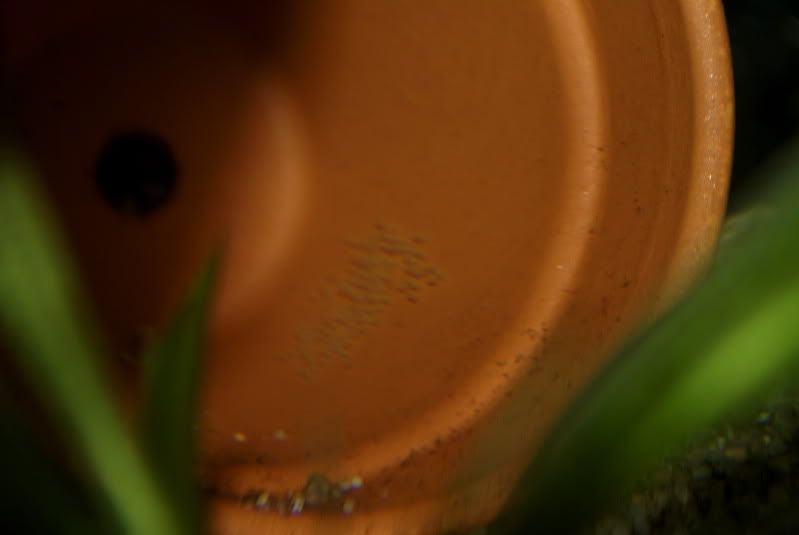
J+4 to us here is arrived on July 29th day from hatching. hatching which took place exactly 60 hours afterwards punter.
at this moment there, parametres are a pH of 5.5 for a conductivity of 80µs in a temperature of 26.5°c.
the day the larvas are over the pot in baked clay and at night indoors.
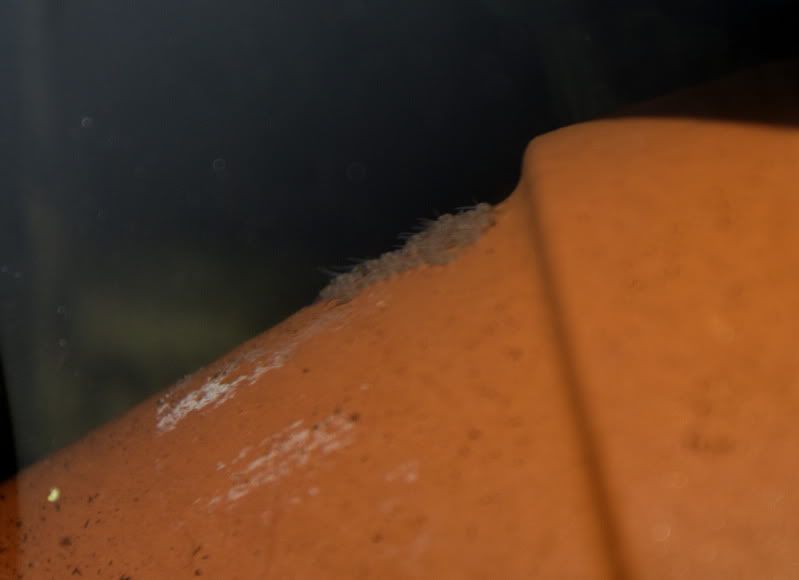
here is the dress of the female at this moment there.
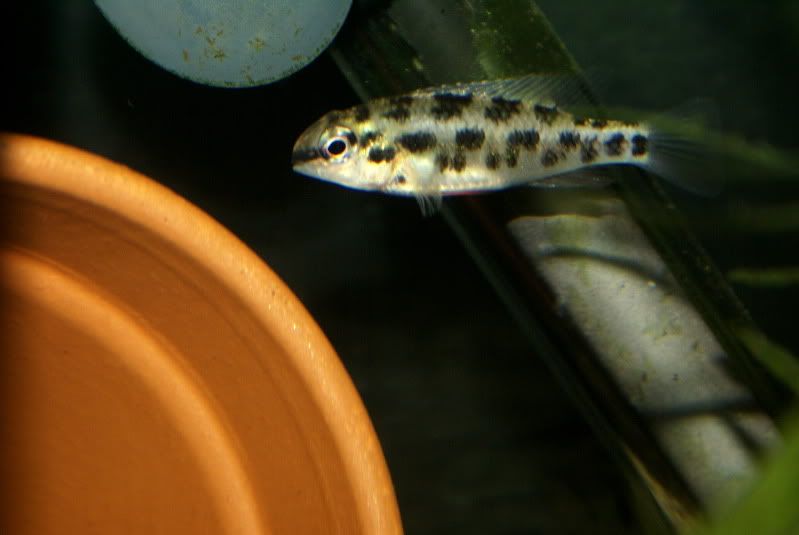
a dress that it has since the beginning the only instant or it had changed it has this date it was to intimidate the male or other inhabitants of the receptacle.
of new the larvas but at the end of party.
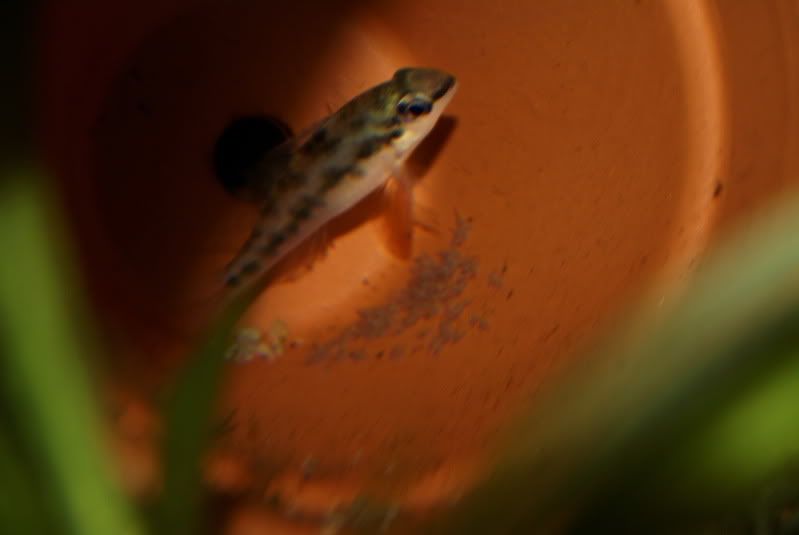
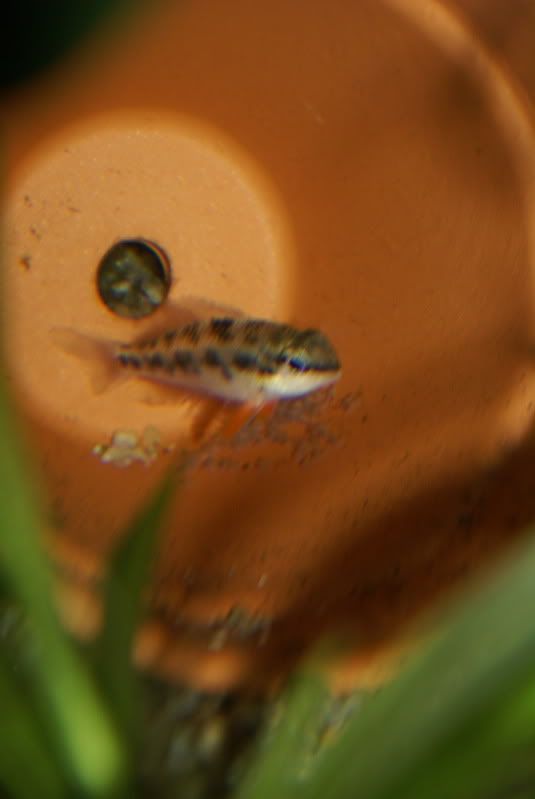
J+5 now they see when they are in front of our eyes that they are formed well and that this begins has resemble one young fishes.
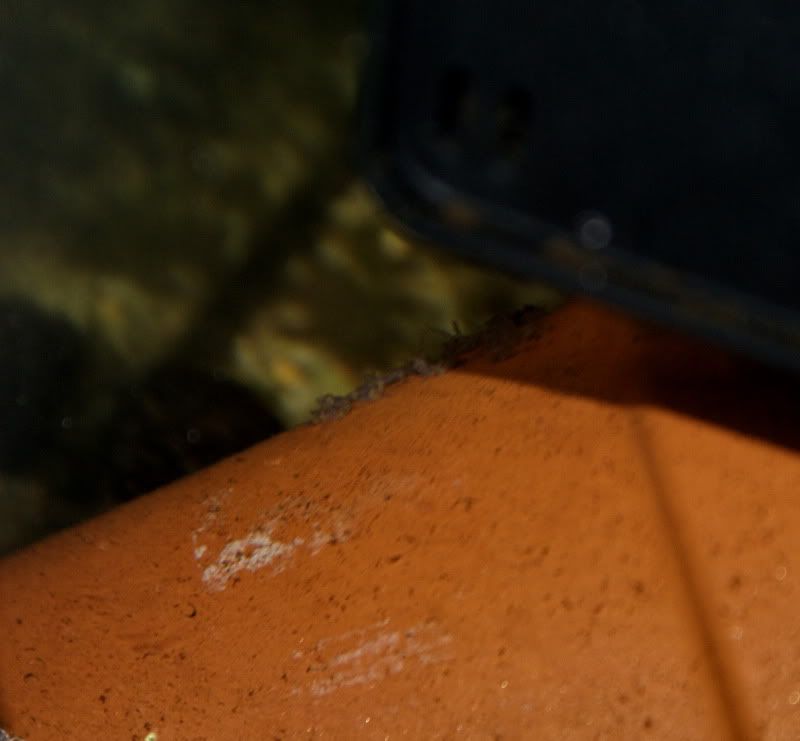
J+6
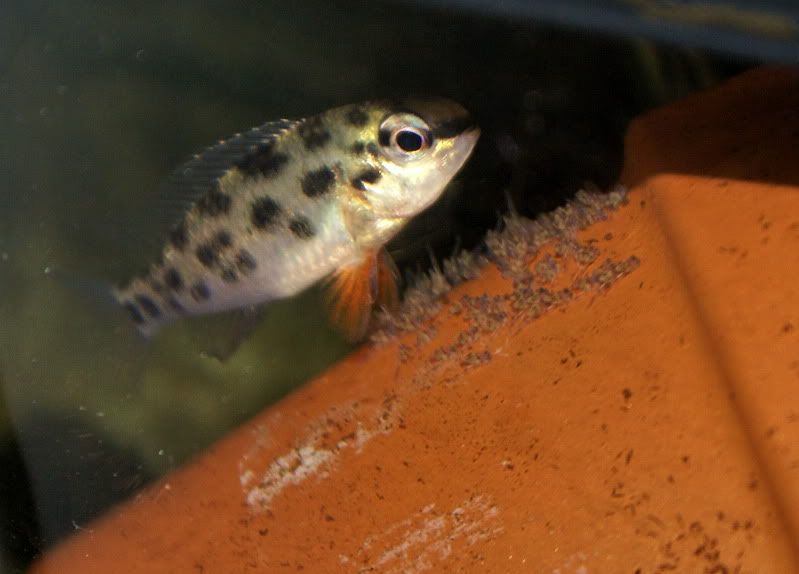
J+8 on August 03rd while the pH is always 5.5 conductivity of 85µs and temperature of 27.5°c
the larvas become young fishes move under the mother and whom she treats for eyes.
first a small plate just before the big adventure of free swimming
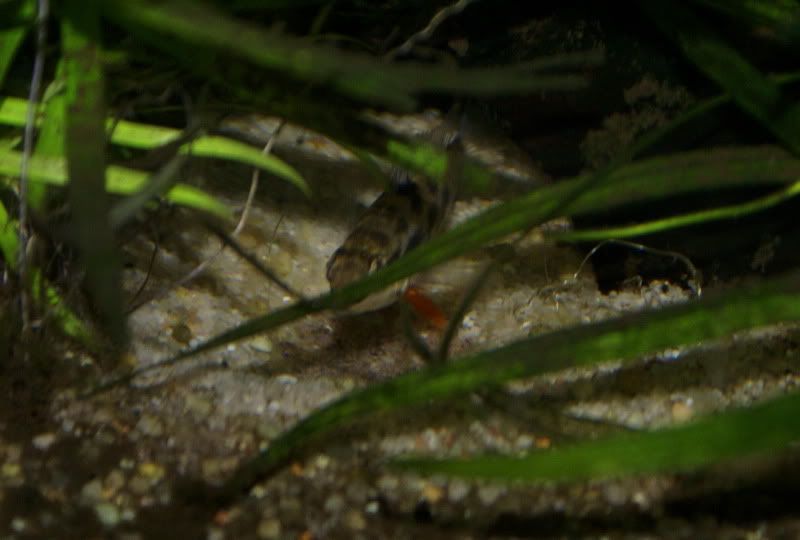
and supporting the beginning of the discovery of their middle.
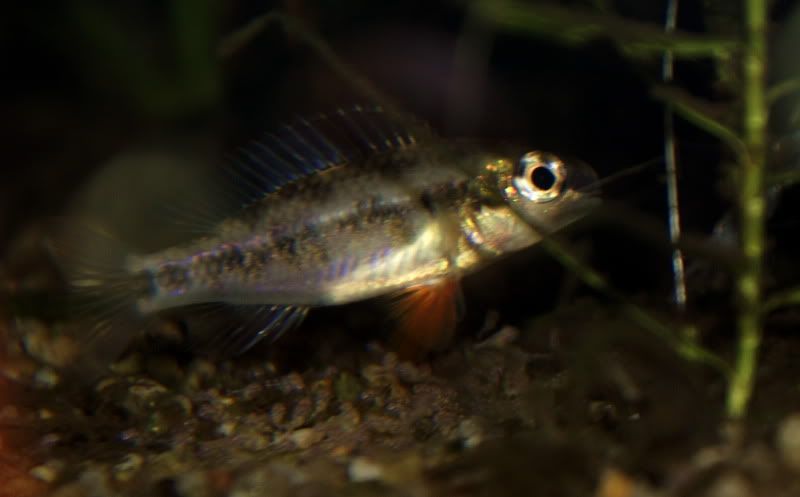
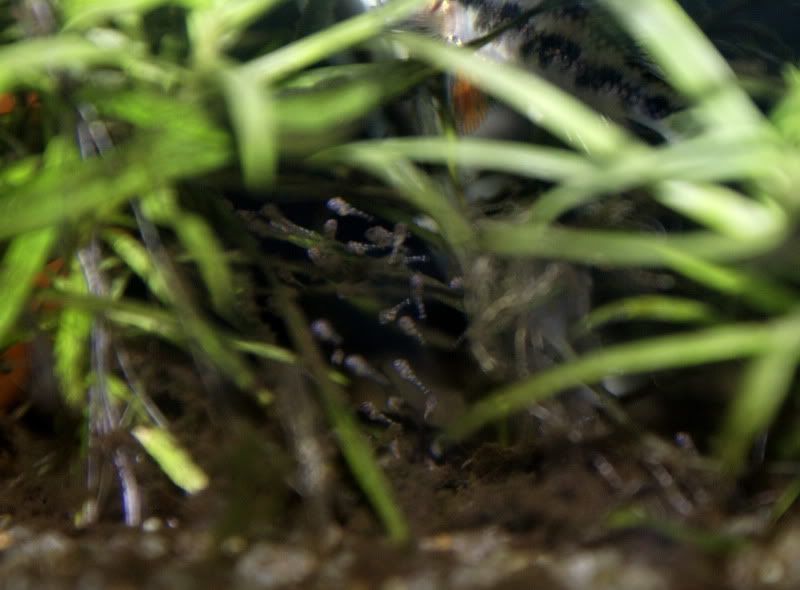
J+9
after their yesterday meals in spite of a vitelin well loaded bag I inject infusoires nevertheless, anguillules vinegars and nauplies artémia but without conviction for these last while some young fishes succeeded nevertheless in gulping them down.
the female, she decided to change dress to show the line in place of points and always pelvic orange with lively red.
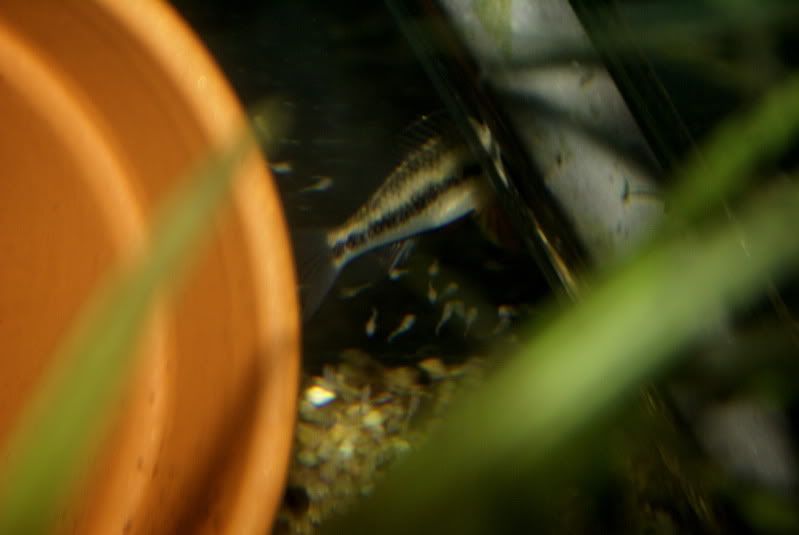
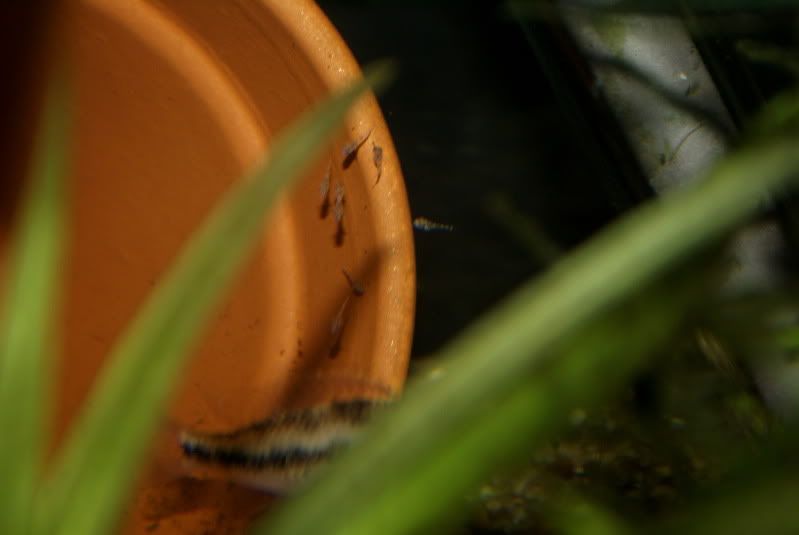

and today
male :
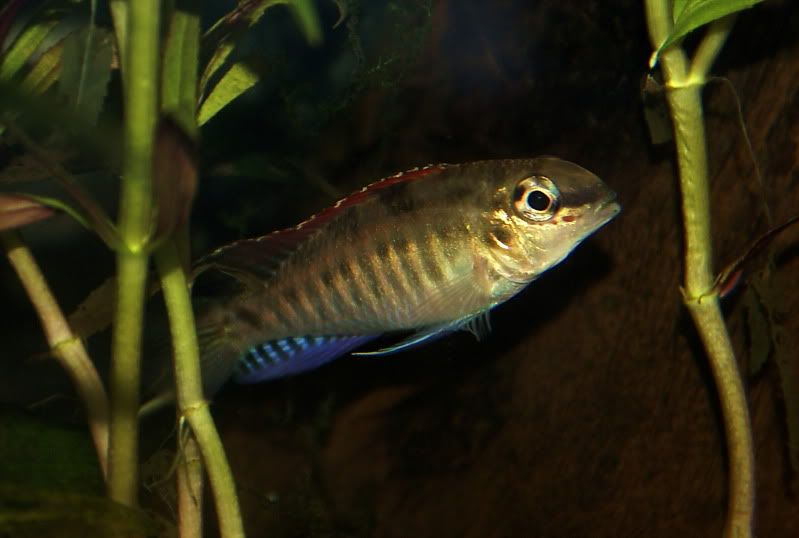
female with fry
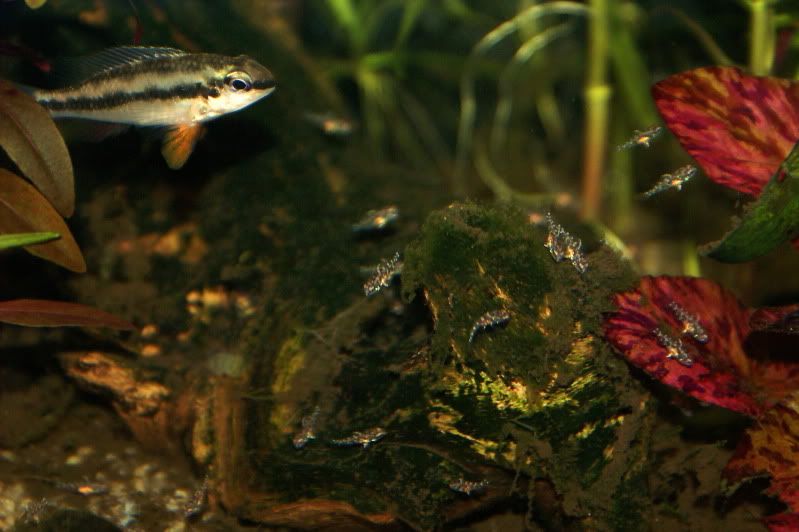
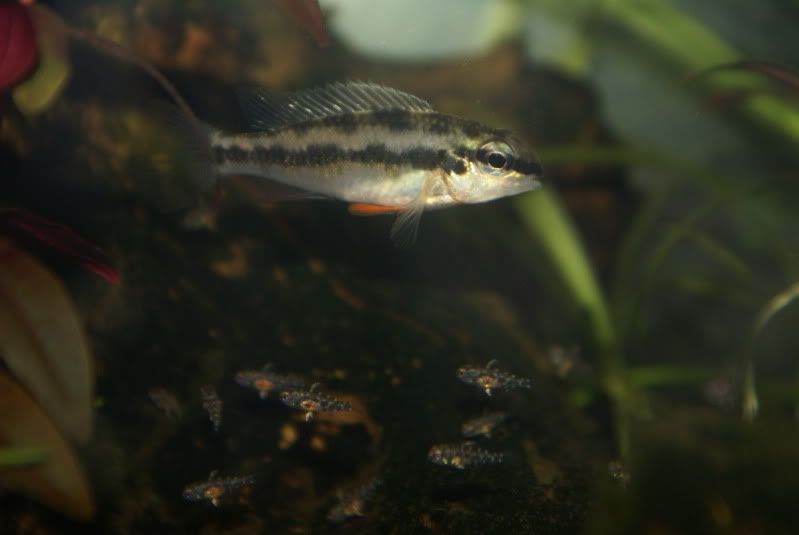
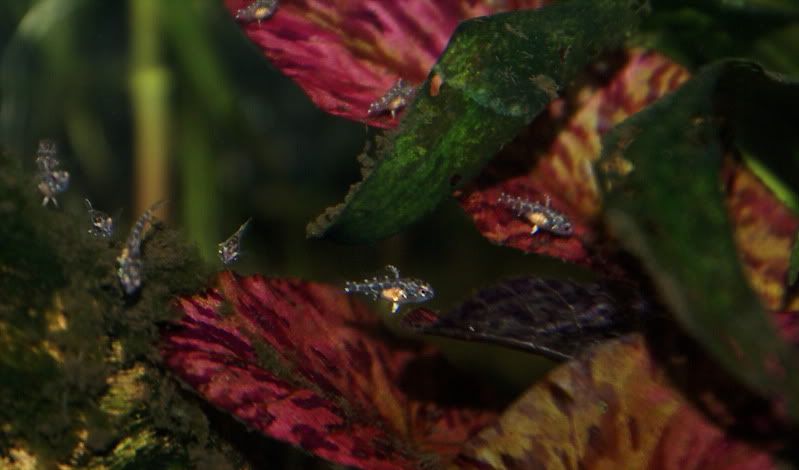
on Monday, July 26th at 22 h 20 the laying began to finish her at 23 h 00.




once this one barely finished the male was directly dispelled and will be never tolerated untill today. to see in future.
parametres during the laying are of pH 5.2 for 75µs of conductivity in a temperature of 26°c.
J+1 the laying goes very well and kept well by the female. very few eggs white which barely going mouldy are withdrawn by the mother.

J+2 2 or 3 white eggs withdrawn still very fast and everything goes well.

J+4 to us here is arrived on July 29th day from hatching. hatching which took place exactly 60 hours afterwards punter.
at this moment there, parametres are a pH of 5.5 for a conductivity of 80µs in a temperature of 26.5°c.
the day the larvas are over the pot in baked clay and at night indoors.

here is the dress of the female at this moment there.

a dress that it has since the beginning the only instant or it had changed it has this date it was to intimidate the male or other inhabitants of the receptacle.
of new the larvas but at the end of party.


J+5 now they see when they are in front of our eyes that they are formed well and that this begins has resemble one young fishes.

J+6

J+8 on August 03rd while the pH is always 5.5 conductivity of 85µs and temperature of 27.5°c
the larvas become young fishes move under the mother and whom she treats for eyes.
first a small plate just before the big adventure of free swimming

and supporting the beginning of the discovery of their middle.


J+9
after their yesterday meals in spite of a vitelin well loaded bag I inject infusoires nevertheless, anguillules vinegars and nauplies artémia but without conviction for these last while some young fishes succeeded nevertheless in gulping them down.
the female, she decided to change dress to show the line in place of points and always pelvic orange with lively red.



and today
male :

female with fry



here is the summary of everything......
Thank you very much!
Great pictures and a very informative and complete overview.
I thought this species would need even lower pH than pH 5.2 to breed, but thanks to your information I now know better!
- Messages
- 99
- Location
- saint denis ; ile de la reunion
My pleasure Tom.
everyone who talked to me about this specie have always said that the ph should be very low but some reproduced so I did not listen and took the experience of Gary L. Bartell has reproduced this species.
everyone who talked to me about this specie have always said that the ph should be very low but some reproduced so I did not listen and took the experience of Gary L. Bartell has reproduced this species.
Hi Bourinite, I know this was a long time ago, I was just wondering what size tank you had them in and what sex ratios or numbers you had? I have some D.foirni, but they look slightly different to yours. So perhaps yours were D.warzelii. Anyway I have 2 males and 3 females but I’ve had to remove the second male as the alpha male was being too aggressive towards him. I might try adding some flower pots. I have them in with Altums currently in a very large 120cm tank. Lots of unrest from the alpha male, but not too receptive from the females. Anyway sorry for digging up an old post, there is not too much info still on either of these species.My pleasure Tom.
everyone who talked to me about this specie have always said that the ph should be very low but some reproduced so I did not listen and took the experience of Gary L. Bartell has reproduced this species.
Tim
Apistoguy52
Active Member
- Messages
- 287
Holy old post!Hi Bourinite, I know this was a long time ago, I was just wondering what size tank you had them in and what sex ratios or numbers you had? I have some D.foirni, but they look slightly different to yours. So perhaps yours were D.warzelii. Anyway I have 2 males and 3 females but I’ve had to remove the second male as the alpha male was being too aggressive towards him. I might try adding some flower pots. I have them in with Altums currently in a very large 120cm tank. Lots of unrest from the alpha male, but not too receptive from the females. Anyway sorry for digging up an old post, there is not too much info still on either of these species.
Tim
Fish in the op’s pictures appear to be foirni (two small dots make the “checkers” vs the single dash of the warzeli. 30 long-40 breeder is adequate. Females prefer to spawn late afternoon, once she’s got an ovipositor out, pay attention. Once the male has been “used”, he will NOT be tolerated
Attachments
Thanks for the reply, they just seem to have more vertical barring than mine do.Holy old post!
Fish in the op’s pictures appear to be foirni (two small dots make the “checkers” vs the single dash of the warzeli. 30 long-40 breeder is adequate. Females prefer to spawn late afternoon, once she’s got an ovipositor out, pay attention. Once the male has been “used”, he will NOT be tolerated
Apistoguy52
Active Member
- Messages
- 287
It’s been years, but if I recall correctly, my males seemed to grow into the vertical stripes (mood permitting) after the 3” mark.Thanks for the reply, they just seem to have more vertical barring than mine do.
View attachment 13773
This male would be easily 3 inches maybe more, but will see how they go. It could be breeding markings.It’s been years, but if I recall correctly, my males seemed to grow into the vertical stripes (mood permitting) after the 3” mark.
- Messages
- 99
- Location
- saint denis ; ile de la reunion
mon réservoir avait 120 cm de façade.Ce mâle mesurerait facilement 3 pouces, peut-être plus, mais il verra comment il se comporte. Il pourrait s'agir de marques de reproduction.
une seule paire de Dicrossus fourni à l'intérieur avec des poissons tramés. le sex-ratio des alevins était d'une femelle pour quatre mâles.
Merci d'avoir déterré ce post, cela me rappelle d'excellents souvenirs.
Similar threads
- Replies
- 7
- Views
- 377
- Replies
- 2
- Views
- 370
